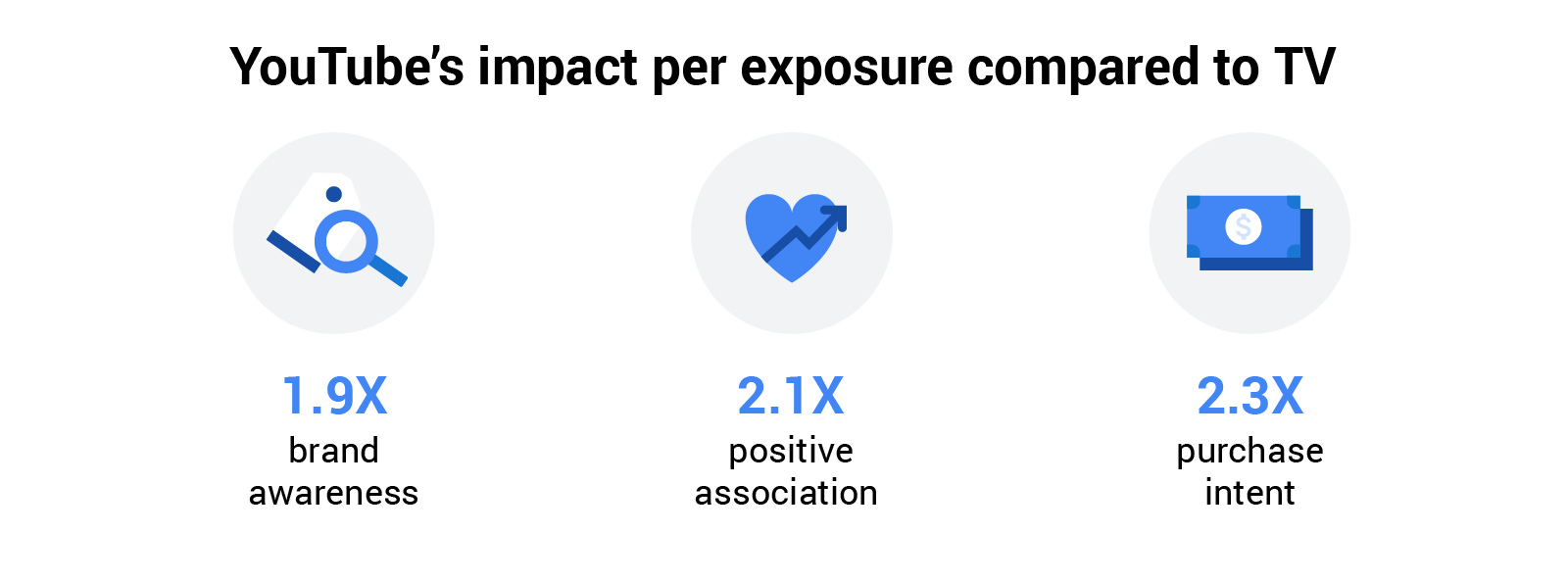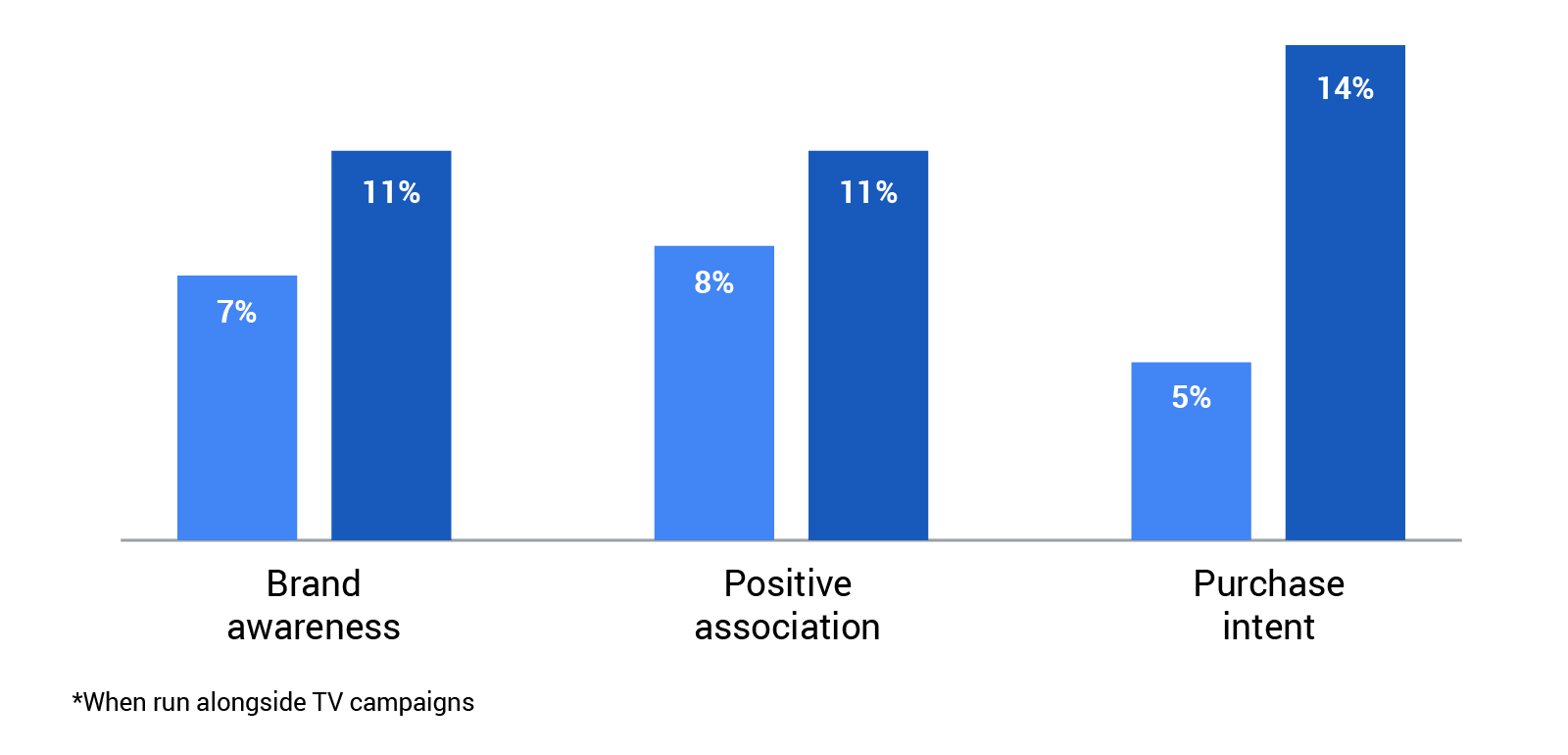People across Southeast Asia (SEA) are tuning into online video more than ever, but that doesn’t mean they’re turning off the TV. Here, Kamal Oberoi, brand measurement lead at Google APAC, shares tips for developing campaigns that captivate viewers across both platforms.
Although SEA viewers watch more online video than ever, TV ads still reach 83% of the region’s consumers — which shows us that their love for traditional media remains strong.1 To help you engage viewers regardless of where and how they watch video, we partnered with Kantar (previously Kantar Millward Brown), to analyze 42 multimedia campaigns across SEA.
By exploring how brands have successfully captivated consumers across industries, we uncovered keys to creating effective, high-impact video campaigns. Here’s what we found:
Show up for viewers on their favorite channels
Three years ago, 29% of SEA consumers said they watched more online video than TV.2 But in just one year, that number grew to 41%.3 These changing preferences are accelerating YouTube’s growing popularity across the region.
Comparing reach over time in SEA

-
TV
-
YouTube
While TV’s incremental reach in SEA has grown by 6.5% in the last four years, YouTube’s has grown by 90%, despite marketers’ relatively low investments in online video.4 But because TV’s overall reach is still second to none in SEA, neglecting one format in favor of the other would mean missing the chance to connect with millions of potential consumers.
The best way to reach a wider audience? Tap into YouTube and TV at the same time. With a presence on both channels, you can meet viewers where they watch their favorite content, regardless of which screen they turn on.
Drive stronger performance with a cross-channel campaign
To get a better idea of how you can best use both TV and YouTube, we explored each channel’s ability to drive brand awareness, build positive associations, and boost people’s motivation to buy. We analyzed ad exposures, or the number of times a brand’s ad was served on each channel, and measured how the exposures influenced these metrics.
Comparing brand impact across channels

-
TV
-
YouTube
At a glance, it may look like TV outperforms YouTube in all aspects (the channels account for 30% and 10% of a video campaign’s overall impact, respectively).5 But because online video engages more leaned-in, attentive audiences, YouTube packs a bigger punch when it comes to impact per ad exposure.

Once we factored in each platform’s relative frequency in campaigns — which averaged 32 ad exposures on TV and five on YouTube — we found that campaigns, on average, saw twice as much brand impact out of every view with online video.6
Brands also drove better results when they ran extended YouTube campaigns. Marketers that served YouTube ads for at least eight weeks alongside their TV ads saw more brand impact, especially when it came to increasing people’s motivation to buy:
YouTube campaigns' impact over time

-
7 weeks or less
-
8 weeks or more
By complementing TV’s wide reach with a strong YouTube presence, you can capture people’s interest, inspire action, and start winning their loyalty.
Tell a cohesive story across touchpoints
We sorted the campaigns in our study into three different groups, depending on how brands approached their multi-channel creative:
- Non-integrated: Creative with different messages served on TV and digital
- Integrated but same: Identical creative served on TV and digital
- Integrated and customized: Creative with the same message served on TV and digital after being customized for each channel
When we compared each group’s performance, we discovered that establishing a cohesive narrative was key to success. Integrated and customized campaigns saw 67% more ROI than non-integrated campaigns.7

This gives you an opportunity to make a bigger impact on viewers by extending your brand storytelling across platforms. You could, for instance, use a TV spot to spark awareness and then follow up with online video to amplify a key message. To establish a strong, balanced presence on both channels, tell a consistent story with creative tailored to each platform.
Combine new and traditional channels to captivate viewers
Whenever new technology emerges, it’s natural to question whether the old ways will soon be obsolete. For instance, we wondered if TV would render radio irrelevant or if texts would replace emails.
Over time, we’ve learned that answers to these questions are complicated and nuanced. People stay loyal to old favorites while embracing the new, and keeping viewers engaged means experimenting with multiple platforms. To learn even more ways of finding the right media mix and showing up across all touchpoints, dive into our full research report.
Methodology
Kantar analyzed 42 multimedia campaigns from its proprietary Cross Media campaign database that aired across SEA between 2015 and 2018. These campaigns had an average of four channels and focused on consumer packaged goods, finance, electronics, and telephone service providers.






